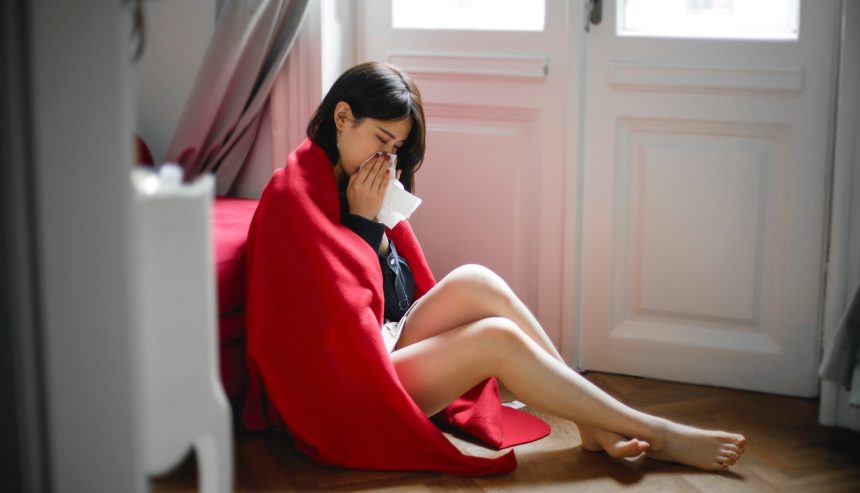Mold is the stuff of nightmares. It’s a horror lurking in dark corners, an insidious invader that silently creeps into your home and can quickly take over if left unchecked. Unfortunately, green mold is one of the most dangerous in your home – it can lead to serious health problems for anyone who comes into contact with it.
Understanding what this mold is and how to identify signs of potential infestation are key steps toward safeguarding your family from its destructive effects. In this article, we will explain the dangers posed by this mold and provide tips on how to protect against it invading your home.
What Is Green Mold?
Green mold often thrives in the damp and dark corners of our homes. It looks like a menacing green-black cloud, silently spreading its tentacles through every crevice it can find. It’s an unwelcome intruder that needs to be understood before it can be removed – so what exactly is this fungus?
Otherwise known as Stachybotrys chartarum, this fungus grows on wet surfaces containing cellulose or fibrous material. The most common places you’ll find this mold are behind wallpaper, under carpets, around windowsills and doorframes, inside air conditioning systems and ducts, and in any area with high humidity levels.
It may seem harmless, but if left unchecked, it could cause serious health issues for your family. Therefore, identifying and removing it from your home should become a priority for all homeowners. Fortunately, there are several steps one can take to make sure their home remains free from this dangerous form of mold growth.
Potential Health Effects
At first glance, mold may seem like a harmless blemish that can be simply wiped away. However, this seemingly benign growth could indicate potentially serious health risks lurking in your home. So while it may not look as dangerous as its black counterpart, the effects of the mold should not be taken lightly.
To understand why it’s important to address their growth, let’s explore some of the potential health concerns associated with exposure:
- Respiratory irritation – Common symptoms include coughing and sneezing, difficulty breathing, and tightness in the chest.
- Allergic reactions – In sensitive individuals, contact or inhalation of spores from molds can cause allergic rhinitis and asthma attacks.
- Skin irritations – Prolonged contact with mold colonies can lead to redness and itching on exposed skin areas.
- Neurological issues – Long-term pollution by moldy air is linked to headaches, memory problems, and even depression or anxiety disorders.
Identifying Mold In Your Home
Once you’ve identified the potential health effects of this mold, it’s time to figure out where it may be growing in your home. Identifying them isn’t always easy and can differ from location to location. Regardless, some general indicators will help you spot it before its presence goes unchecked.
- First, the most common place for this mold to grow is any area with significant moisture or humidity, like bathrooms and laundry rooms. However, other areas are still prone as well. Basements and crawlspaces tend to suffer from high dampness levels because they often don’t get enough ventilation and air circulation.
- It’s also important to remember that just because a surface looks dry doesn’t necessarily mean it is — so make sure you investigate further if something seems off.
- Look for discolored patches on walls or surfaces, usual shades of blue-green or white-gray.
- Pay attention to musty odors since this could indicate the presence of spores in the air produced by infestations behind walls or underneath floorboards.
If you still need to determine whether you see mold, contact a mold remediation company that can inspect the affected area more closely. Taking active steps towards preventing future growth starts with understanding how this fungus grows in the first place — something we’ll discuss next.
Preventing Mold Growth

Once you’ve identified the presence of this mold in your home, it’s important to take steps to prevent its future growth. Several strategies can help protect against the proliferation and spread of this hazardous fungus.
- Make sure any areas prone to moisture or condensation are well-ventilated. This means opening windows when possible and using dehumidifiers where appropriate – especially in bathrooms and kitchens.
- Regularly check for water damage around pipes, chimneys, walls, and other places in your home which could be vulnerable to leaks and subsequent mold growth.
- Try to keep humidity levels low by using fans or air conditioners during particularly humid months. If necessary, consider investing in a hygrometer to measure relative humidity accurately; anything above 60% is an ideal breeding ground for molds to grow.
Taking these proactive measures will go a long way toward preventing such infestations from occurring down the road. With the right precautions, peace of mind follows, knowing that your home is safe from this dangerous fungus.
Treating Existing Mold Infestations
This mold is an insidious threat, like a silent killer lurking in your home. It can have disastrous consequences if left untreated, so understanding how to treat existing infestations is essential. Fortunately, there are effective ways you can take to ensure the problem doesn’t spiral out of control.
To tackle this unwelcome guest with maximum efficiency, start by arming yourself with the following:
- Protective gear such as face masks, eye protection, and gloves
- Use bleach or an EPA-approved fungicide
- Choose a brush or scrubber for cleaning surfaces.
With all these items, you’ve got everything needed to eliminate those unsightly green patches.
- The first step is to create a barrier between yourself and the affected area – put on protective clothing before beginning treatment.
- If possible, open windows and turn on fans to ventilate the room while working for optimal safety.
- Then spray down any visible signs of mold growth with either bleach or approved fungicides until completely saturated – make sure not to miss any spots!
- Use a stiff brush or scrubber to remove discolored areas from hard surfaces and clean thoroughly afterward.
- Lastly, hire professional mold removal services to address the problem correctly and prevent future infestation.
Conclusion
Green mold is a serious threat to the health of your home and everyone who lives in it. It can cause physical symptoms, exacerbate existing conditions, and even lead to more serious illnesses. Identifying and preventing its growth are essential steps toward keeping your home safe.
Treating an existing infestation should be done carefully with professional assistance. By being aware of what this mold looks like, how it affects you, and how to protect against its spread or eliminate it, homeowners everywhere can take proactive steps towards ensuring their homes remain healthy spaces for living. Taking swift action when the first signs of growth appear will help ensure that any negative impacts on your family’s well-being are minimized or avoided altogether.
With knowledge comes power – if you spot signs of mold growth in your household, don’t despair; instead, act quickly and decisively by following the advice outlined above to protect yourself and those around you from this potential menace.
If you’re looking for professional property restoration services in Bradenton, PuroClean of Bradenton is here to address your needs. Contact us today for inquiries or during emergencies. Our team is always ready to respond to your situation.



 PuroClean of Bradenton
PuroClean of Bradenton